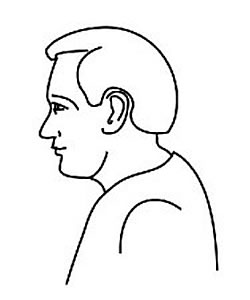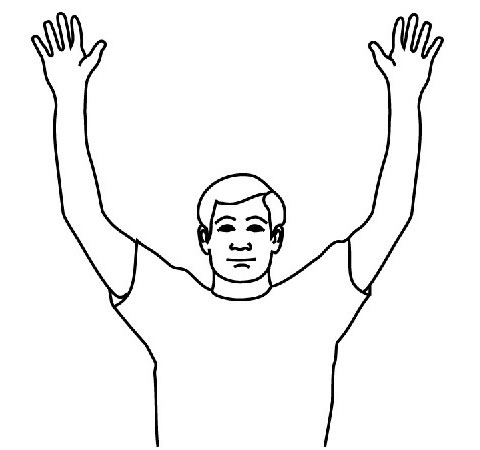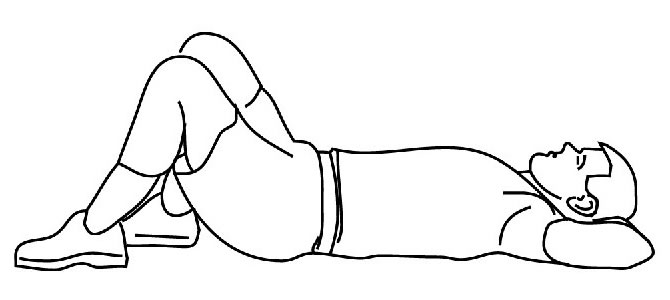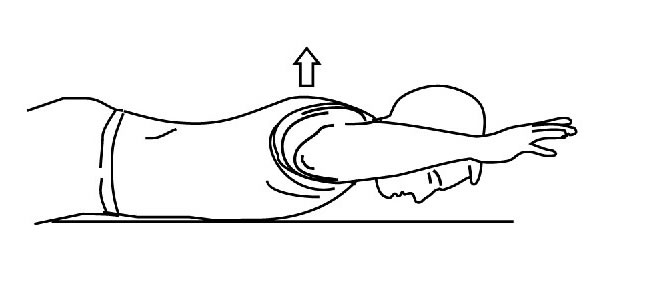TMJ Matters
TMD Self Management Therapies.
Closure Muscle - Stretching Exercise
Instructions for care after the Placement of Dental Implants.
People unconsciously stretch many of their muscles throughout the day. Patients who have jaw muscle stiffness or pain often find a significant improvement in their symptoms with this jaw stretching exercise. Your dentist believes your symptoms will improve if you perform this simple jaw stretching exercise 6 times a day, between 30 and 60 seconds each time, at the opening and duration you determine best for you.
It is best to warm your jaw muscles before you stretch by slowly opening and closing about 10 times. You may also warm your muscles by applying heat to them (allow time for the heat to penetrate into your muscles). While stretching you need to concentrate on relaxing your lips, facial muscles and jaw. Do not bite on your fingers while stretching, they are only to give you a guide for the width you are stretching.
You will need to determine what opening and duration are best for you. To determine this, the first time you stretch, bend your index finger and place the middle knuckle between your upper and lower front teeth (see Figure 1). Hold this position for 30 seconds. If this does not aggravate your symptoms, the second time you stretch, increase the time to 45 seconds. If this does not aggravate your symptoms, the next time increase it to 60 seconds. If this does not aggravate your symptoms, increase your opening width to 2 fingertips (see Figure 2) and cut your time back to 30 seconds. Continue increasing your time and opening in this manner, but do not go beyond 3 finger tips. Find the largest opening and duration that does not cause even the slightest discomfort or aggravation of your symptoms and use this each time you stretch. If you experience any discomfort or aggravation, decrease your opening or time.

As your symptoms improve or if you have a flare-up, you will need to increase or decrease this opening and time. Be very careful not to cause yourself any aggravation with this exercise, because this may hurt your progress.
Patients report this exercise does not provide immediate symptom improvement, but takes about 1-2 weeks before benefits are noticed. Similarly, stopping does not cause immediate loss of these benefits, but also tends to take 1-2 weeks to be noticed. With the normal symptom fluctuation most TMD patients experience, it is often difficult for them to relate their symptom improvement or aggravation with the starting or stopping of this exercise.
Occlusal Appliance Care Instructions
Instructions for care after the Uncovering of Implants.
The appliance is designed to protect and stabilize your jaw muscles and joints. It should help you feel more comfortable and allow healing to occur. To obtain its maximum benefit, use it in the following manner:
- Do not bite down on your appliance. The appliance is to help you realize when you are clenching and help you break this habit. Constantly monitor your jaw position and remember to keep your tongue up and your teeth off of the appliance.
- Some patients need to gradually increase the amount of time they wear their appliance until they reach their recommended wear schedule. Occasionally the appliance may cause a temporary increase in jaw tension or joint noises; a slower increase in wear time may be necessary. If your appliance hurts your teeth or gums, leave it out and come back to have it adjusted.
- Do not wear your appliance when you eat.
- Clean the inside and outside of your appliance at least daily with your toothbrush and toothpaste. It can be soaked with a denture cleaner solution to help clean it.
-
When you are not wearing your appliance:
- be careful where you place it, because it is very fragile.
- do not let it lay around, dogs and cats enjoy chewing on them.
- do not leave it in a warm place (i.e. inside your car on warm day), or it may warp.
- if your appliance will be out of your mouth for more than 8 hours, store it in a moist environment. You can place it with a few drops of water in a zip-lock bag or margarine tub.
- Some patients find their appliance causes them to salivate, while others find it causes them to have a dry mouth. This is generally only a temporary situation.
- When you take your appliance out, your jaw may take a few seconds to adjust back to the way your teeth normally fit together.
- Always take your appliance to your dental appointments, especially to the initial appointments where we will be refining your appliance.
This advice should help you optimize the benefit you can obtain from your appliance and maintain your oral health.
Posture Improvement Exercise
Instructions for care after the Extraction of a Tooth.
List of Exercises
-
Chin Tucks
Tuck your chin back over the notch above your sternum, so that your ear is in line with the tip of your shoulder.
Perform: 10 times on the hour
Hold: 5 seconds
-
Chest Stretch
Stand in a doorway or the corner of a room. Lean forward, with your hands on the wall, until you feel significant stretch across the front of your chest. Do this exercise as requested in both positions.
Perform: 3 times a day, 2 repetitions
Hold: 15 seconds
-
Wall Stretch
Stand with your back against the wall and your arms positioned as shown in the drawing. Straighten your upper back and flatten your lower back against the wall. Press your head back with your chin down and in, and pull your elbows back against the wall. Do this exercise as requested in both positions.
Perform: 3 times a day, 2 repetitions
Hold: 15 seconds
-
On-Your-Back Neck Stretch
Lie on your back with your hands clasped behind your head. As you exhale, slowly bring your elbows together touching in front of your face. As you inhale, slowly draw the elbows apart until they touch the floor.
Perform: before you retire, 10 repetitions

-
Face-Down Arm Lifts
Lie on your stomach as shown in the drawings (position 1 has the elbows at shoulder level and bent at 90 degrees, while position 2 has elbows at ear level). Lift your arms, head and chest off the floor and repeat until you can only move 50% through the range or to fatigue, do this in both positions.
Perform: once a day, 5 days/week

General Precautions
If these exercises cause any discomfort or aggravate your pain, discontinue these exercises and until you discuss this with your provider.
Stretching should be done in a slow, gradual, easy and painless manner. Move to the point of mild tension and hold. Do not bounce!
TMD Self Management Therapies
Instructions for care after the Extraction of a Tooth.
Your dentist determined you have a temporomandibular disorder that is often referred to as TMD. The "T" in TMD stands for the temple, "M" for the mandible or jaw, and "D" for a disorder within this complex. This disorder is usually due to an overuse of this system.
We use this system for many activities (talking, eating, yawning, laughing) and, when we are not engaged in these, we need to allow our jaw muscles and joints to relax. Many people have developed habits that do not permit their muscles or joints to relax for a sufficient amount of time. The following will help instruct you on how to reduce the TMD pain you are having:
- Massage your painful muscles, as you find this beneficial. Use your index, middle, and ring fingers in a rolling motion over your skin with a pressure slightly greater than what is needed to produce your pain.
- When massaging the masseter muscle (jaw muscle), some patients prefer to simultaneously place their thumb inside their mouths and apply a counter force with it. This works best if the right hand is used to massage the left masseter muscle and the left hand is used to massage the right masseter muscle.
- Some patients find it beneficial to locate and knead the most painful portion of the muscle for approximately one minute. Be careful not to hurt yourself by massaging your muscles too aggressively.
- Apply heat, ice or a combination of heat and ice to the painful areas. Use which ever provides you with the greatest amount of relief; most patients prefer heat.
- Use heat for 20 minutes two or four times each day. Some patients prefer to use moist heat whereas others find dry heat just as effective and less of a hassle. Moist heat can be obtained by wetting a thin washcloth with very warm water. The washcloth can then be kept warm by wrapping it around a hot-water bottle or placing it against a heating pad separated by a piece of plastic wrap.
- Use the combination of heat and ice two to four times each day. Apply heat to the painful area for approximately 5 minutes (less if it aggravates your pain). Then apply an ice cube wrapped in a thin washcloth.
- Apply ice wrapped in a thin washcloth until you first feel some numbness and then remove it (this usually takes about 10 minutes).
- Eat soft foods like casseroles, canned fruits, soups, eggs, oatmeal, and yogurt. Do not chew gum or eat hard foods (e.g., raw carrots) or chewy foods (e.g., caramels, steak, and bagels). Cut other foods into small pieces, evenly divide the food on both sides of your mouth, and chew on both sides.
- Avoid caffeine because it stimulates your muscles to contract and hold tension. Caffeine or caffeine-like drugs are found in coffee, tea, most sodas, and chocolate. Decaffeinated coffee also has some caffeine, whereas Sanka has none.
- Your teeth should never touch except lightly when you swallow. Closely monitor yourself for a clenching or grinding habit. People often clench their teeth when they are irritated, drive a car, use a computer, or concentrate. Learn to keep your jaw muscles relaxed, teeth separated, and tongue resting lightly on the roof of your mouth just behind your upper front teeth.
- Observe for and avoid additional habits that put unnecessary strain on your jaw muscles and joints. Some habits include, but are not limited to, resting your teeth together; tapping your teeth together; resting your jaw on your hand biting your cheeks, lips, finger nails, cuticles, or any other objects you may put in your mouth; pushing your tongue against your teeth; and holding your jaw in an uncomfortable or tense position.
- Posture appears to play a role in TMD symptoms. Try to maintain good head, neck and shoulder posture. You may find that a small pillow or rolled towel supporting your lower back may be helpful. Ensure you maintain good posture when using a computer and avoid poor postural habits such as cradling the telephone against your shoulder.
- Your sleep posture is also important. Avoid positions that strain your neck or jaw, such as stomach sleeping. If you sleep on your side, keep your neck and jaw aligned.
- Set aside time once or twice a day to relax and drain the tension from your jaw and neck. Patients often benefit from simple relaxation techniques such as sitting in a quiet room while listening to soothing music, taking a warm shower or bath, and slow deep breathing. Once you have learned to relax and drain the tension from your jaw and neck, continually monitor these. Whenever tension is observed, release it.
- Restrain from opening your mouth wide, such as yawning, yelling, or prolonged dental procedures.
- Use Aspercreme Creme over the affected area 4 times a day as beneficial. Or take anti-inflammatory and pain-reducing medications, such as Aleve, ibuprofen, Tylenol, and aspirin, to reduce joint and muscle pain. Avoid those with caffeine, e.g., Anacin, Excedrin, or Vanquish.
There is no cure for TMD, and you may need to follow these instructions for the rest of your life. Your dentist may suggest other therapies in addition to these instructions. No single therapy has been shown to be totally effective for TMD, and a percentage of patients receiving therapies report no symptom improvement (i.e., 10 to 20 percent of patients receiving occlusal appliances report no improvement). Based on your symptoms and identified contributing factors, an individualized treatment approach will be recommended that may be revised as your symptom response is observed.
Contact
Centrally located in Singapore. Conveniently located within walking distance of Kovan MRT Station and three bus stops.
Our Address
Bright Dental Surgery
1016 Upper Serangoon Road, Singapore 534754
Email Us
enquiries@brightdental.com.sg
Call Us
+65 6280 0701
Nearest MRT Station
Kovan MRT Station
North East MRT Line
Nearest Bus Services
80, 81, 82, 101, 107, 107M, 112, 113, 119, 136, 153
